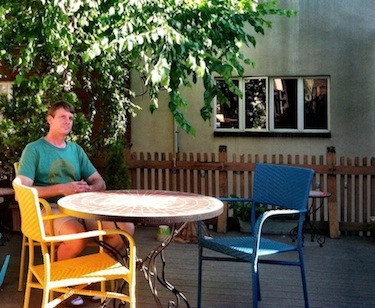When a new job at the University of Pennsylvania brought research scientist Stewart Anderson, his wife Alexandra, and their family from Manhattan to Philadelphia, they were eager to find a great and kid-friendly home. They would quickly learn however that getting the perfect house would require an open mind.
In beginning their home search, Stewart and Alexandra agreed on a few basic requirements for their future house: they wanted a place where their young son would be safe (“no spiral staircases” Alexandra says) that also had outdoor space, three real bedrooms (Stewart’s daughter from a previous marriage lives with the couple during the school year) and lots of light.
Where they might find a home with those attributes and in their price range became the real question though. After Alexandra ruled out West Philadelphia, Stewart’s new colleagues encouraged him to look in the Fitler’s Square neighborhood. While he and Alexandra loved the area, they had trouble finding a home there that met all their needs. “Prices were higher in Fitler’s Square than we liked, and I felt like we would be paying for the great neighborhood and not much more” Stewart says.
Stewart and Alexandra soon realized they needed to learn more about what was out there to find the right home. “We’re scientists,” Stewart says with a smile, “and when we find out there’s something we don’t know, we’re trained to educate ourselves.”
Working with Deborah Solo, they did their research and soon began looking in Queen Village – a neighborhood they had heard of but hadn’t realized was quite so kid-friendly. The couple quickly fell in love with the area’s quirky charms, strong community feel, and access to the great restaurants around Headhouse Square.

Growing steadily more confident about the area, Stewart eventually found a modern five-bedroom townhouse on a residential block in Queen Village. Touring the home, Stewart loved the huge back deck area, expansive windows, and one-car garage. For her part though, Alexandra was put off by the home’s décor. Stewart insisted, and Deborah affirmed, that those aesthetic issues could be easily fixed. Indeed, both Stewart and Alexandra are quick to add that working with Deborah was a breeze – “She knew when to take the lead and when to step back. We appreciated that” Stewart says.
While their home search wasn’t quite as quick as they had hoped, the family is truly pleased with their new abode. More than just the house itself, they’ve come to appreciate their new neighborhood’s little perks, like the easy access to I-95 and the decidedly non-Manhattan-like peace and quiet of Queen Village. These are the kind of benefits that make this new Philadelphia family confident they’ll love this home for many years to come.
